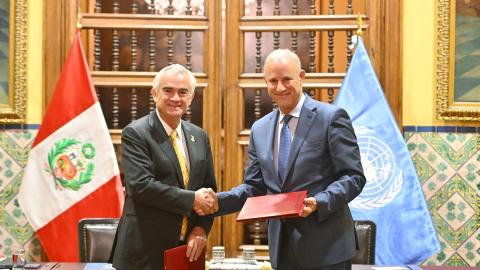Press Release
Green innovation —or eco-innovation— can be described in general terms as the introduction, by any area within a company, of a new or significantly improved product, process or method for marketing or organization in order to create economic benefits and reduce environmental impact.
This topic is examined in depth in two new documents from the Economic Commission for Latin America and the Caribbean (ECLAC). The first of these, Eco-innovation and green production: An overview of policies in Latin America and the Caribbean (Spanish only), aims to explain the factors that guide eco-innovation in Latin American companies and to identify the policies and instruments needed to promote it, in line with the new Sustainable Development Goals (SDGs).
In doing so, it reviews the available literature, examines the region’s challenges and opportunities in this area, offers an analytical framework for the design and promotion of green production policies, describes a number of international initiatives for quantifying eco-innovation and sets out a series of practical case studies.
“There is a need for policies to address the weaknesses of companies and to foster the incorporation of technology, knowledge and innovation into productive processes in pursuit of more inclusive and sustainable growth. However, policies and instruments cannot be designed or implemented for something that is not understood,” notes the text.
The second document, Green production indicators: A guide for pursuing sustainable development (Spanish only), proposes a System of Green Production Indicators (SGPI), to be used by national statistics offices, ministries responsible for industrial and environmental policy and other agencies and actors.
The guide, which deals with manufacturing industry, is intended as a series of methodological recommendations for generating statistics about companies’ environmental practices. Although use of the instrument is voluntary, ECLAC hopes that following its guidelines will assist the production of data and their comparability at the regional level.
The document offers basic and expanded sets of green production indicators (GPIs), which can provide an overview of the evolution of manufacturing industry and its environmental commitment. This is important information for supporting political decision-making on different issues relating to green production.
The creation of new productive capacities and the adoption of green technologies are among the main challenges currently facing the countries of Latin America and the Caribbean as they progress towards sustainable development. Environmental innovation or eco-innovation can play a key role in this process, ECLAC suggests in the new documents.
The two eco-innovation publications were produced under the project “Towards a set of indicators for greener production”, which is jointly financed by ECLAC and Canada’s International Development Research Centre (IDRC).
For queries, contact the ECLAC Public Information Unit.
E-mail: prensa@cepal.org; Telephone: (56) 22210 2040.
Follow us on: Twitter, Facebook, Flickr, YouTube and Google+.



